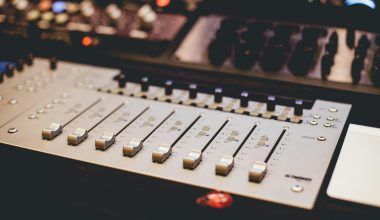Budgeting is an essential tool in managing resources, whether at the individual, corporate, or national level. A budget is an instrument of financial planning, control, and development, shaping how resources are allocated and goals are achieved. This comprehensive guide explores how budgets are used as instruments to manage finances effectively, foster economic stability, and drive progress.
What Does It Mean That a Budget Is an Instrument Of?
A budget serves as an instrument to guide decision-making and prioritize actions based on available resources. Its role includes:
- Planning: Forecasting income and expenses to align with future goals.
- Control: Monitoring financial activities to prevent overspending or misallocation.
- Accountability: Ensuring transparency in resource utilization.
- Development: Supporting growth through strategic investment in key areas.
By serving these purposes, budgets empower individuals, organizations, and governments to achieve both short-term and long-term objectives.
Budget as an Instrument of Planning
Effective planning begins with a well-structured budget. Here’s how it functions as a planning tool:
- Setting Priorities
Budgets allocate resources to the most critical needs, ensuring that goals are met efficiently. For instance, a personal budget might prioritize savings and debt repayment, while a corporate budget could focus on expansion or product development. - Forecasting Financial Needs
Planning involves anticipating future expenses and income. Budgets allow for proactive preparation, minimizing surprises. - Aligning with Objectives
Every budget is designed to align resources with objectives, whether they are personal milestones, business targets, or government policies.
Budget as an Instrument of Control
Control is a key function of budgeting. It ensures that financial activities remain aligned with the planned goals.
- Monitoring Spending
A budget tracks income and expenses in real-time, helping to prevent overspending. - Restricting Waste
Allocating specific amounts for each category reduces the risk of unnecessary expenditures. - Facilitating Adjustments
If actual expenses deviate from the budget, adjustments can be made promptly to stay on track.
Budget as an Instrument of Economic Growth
On a national level, budgets drive development and stability. Governments use budgets as instruments to:
- Allocate Resources
Funding is directed toward sectors like healthcare, education, and infrastructure to promote growth. - Stabilize the Economy
Fiscal policies outlined in the budget help control inflation and stimulate economic activity. - Encourage Investment
Budgets can offer incentives for businesses to invest, creating jobs and boosting the economy.
Types of Budgets
Different types of budgets serve unique purposes. Understanding these can help tailor your financial planning effectively:
- Personal Budgets
Focus on managing individual income and expenses. - Corporate Budgets
Used by businesses to allocate resources for operations, projects, and growth. - Government Budgets
Outline a country’s financial plans, including taxation, spending, and debt management. - Project Budgets
Specific to individual projects, detailing costs and expected revenues.
How to Create an Effective Budget
Whether for personal use or organizational needs, creating a budget involves the following steps:
- Identify Goals
Define what you want to achieve, such as saving for a vacation, reducing debt, or increasing profits. - Track Income and Expenses
Monitor all sources of income and categorize expenses to understand spending patterns. - Allocate Resources
Assign specific amounts to categories like savings, investments, and essential expenses. - Review Regularly
Update your budget to reflect changes in income, expenses, or priorities. - Use Tools
Leverage budgeting apps, spreadsheets, or financial software to streamline the process.
Challenges in Budgeting
While a budget is an instrument of financial control, it is not without challenges:
- Unpredictable Expenses
Emergencies or unexpected costs can disrupt even the most well-planned budgets. - Overestimating Income
Being overly optimistic about future income can lead to financial shortfalls. - Adapting to Changes
Economic shifts, like inflation or job loss, require budget adjustments. - Lack of Discipline
Sticking to a budget requires commitment and self-control.
Benefits of Budgeting
Despite the challenges, budgeting offers numerous advantages:
- Financial Stability
Helps prevent debt and ensures that resources are used efficiently. - Goal Achievement
Aligns spending with personal or organizational objectives. - Improved Decision-Making
Provides clarity on where to cut costs or increase investments. - Transparency
Especially important for organizations and governments, budgets promote accountability.
The Role of Technology in Budgeting
Advancements in technology have transformed how we approach budgeting. Apps like Mint, YNAB (You Need A Budget), and QuickBooks offer tools to simplify the process. Key features include:
- Automated Tracking
Automatically categorize and monitor transactions. - Real-Time Updates
Access your budget from anywhere with real-time data. - Data Analysis
Use insights to optimize your spending and savings.
Final Thoughts
A budget is an instrument of planning, control, and growth, offering a roadmap for managing resources effectively. Whether you’re an individual saving for the future, a business aiming for profit, or a government fostering economic stability, budgeting is essential for achieving your goals.
Related Articles:
For further reading, explore these related articles:
- Which is the Easiest Instrument to Learn? Find Out in This Beginner’s Guide
- Discover the Best Cheap Musical Instruments for Beginners
For additional resources on music marketing and distribution, visit Deliver My Tune.






